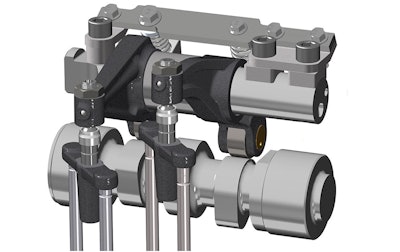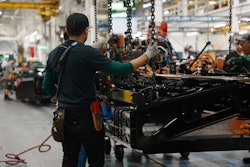
Jacobs announced the introduction of its Cylinder Deactivation (CDA) technology for medium- and heavy-duty commercial vehicle engines in 2018. Tula has licensed its Dynamic Skip Fire (DSF) technology onto major automotive OEM gasoline applications. The new working partnership between the two companies will utilize Tula’s DSF controls technology to support Jacobs’ expertise in diesel deactivation hardware development, Jacobs says.
“Jacobs is very excited to partner with Tula to progress cylinder deactivation technology by combining our companies’ strengths,” says Robb Janak, director, new technology, Jacobs Vehicle Systems. “Vehicle manufacturers are looking for new and improved technologies to comply with stricter legal limits on CO2 and NOx emissions. New test measures, such as Real Driving Emissions and CARB Low Load Cycle for heavy-duty trucks are encouraging the adoption of smarter technologies that address these requirements. Cylinder deactivation is a great solution, technically proven and cost effective.”
With Jacobs’ CDA, cylinder deactivation mechanisms originally designed for the company’s High Power Density (HPD) engine brake are used in the valve train to disable the opening of the intake and exhaust valves. The hydraulically activated mechanism is integrated in a collapsing valve bridge system for overhead camshaft engines or with a collapsing pushrod system for cam-in-block engines. When this is combined with disabled injection in selected cylinders, multiple cylinders can be deactivated as needed. At low engine loads with three of six cylinders deactivated, fuel consumption can be improved by up to 20 percent, the company says.
Jacobs’ CDA reduces emissions by achieving higher exhaust temperatures by maintaining after-treatment temperatures for optimal efficiency of selective catalytic reduction systems, even when the engine is in idle or low-load operation. CDA also enables faster warm-up after engine start-up of the aftertreatment system and minimizes cooling of aftertreatment during coasting. CDA additionally reduces camshaft friction, reduces pumping losses in part-load conditions, and can reduce or eliminate use of the intake throttle, all of which yields overall improvements in fuel consumption while simultaneously increasing exhaust temperatures, Jacobs says.
“Tula is pleased to support our industry partner Jacobs Vehicle Systems in its development of Dynamic Skip Fire-enabling hardware for the diesel engine marketplace,” says John Fuerst, Tula senior vice president, engineering.
Tula has developed an infinitely variable cylinder deactivation system, integrating advanced digital signal processing and software with sophisticated engine control algorithms. This technology reduces fuel consumption of gasoline engines by 6 to 15 percent on real-world drive cycles; the collaboration with Jacobs aims to enable Jacobs to develop and demonstrate deactivation hardware required for diesel engines, according to an announcement.
The Tula DSF system makes dynamic firing decisions based on how much torque is requested and then selectively choosing which cylinders will be active or deactivated to meet performance demand. When more torque is required, the firing density increases, and when there is less demand for torque, firing density decreases. This means the control algorithm effectively creates an engine with optimal displacement for the torque required.
Tula’s control system also ensures production-level NVH. By having the ability to select which cylinders are fired every engine cycle, and by taking into account the frequencies and amplitudes of vibration produced by cylinder combinations, the control algorithm determines the cylinder firing sequences that deliver smooth operation and reduced cost to the driver at the fuel pump, the companies say.










